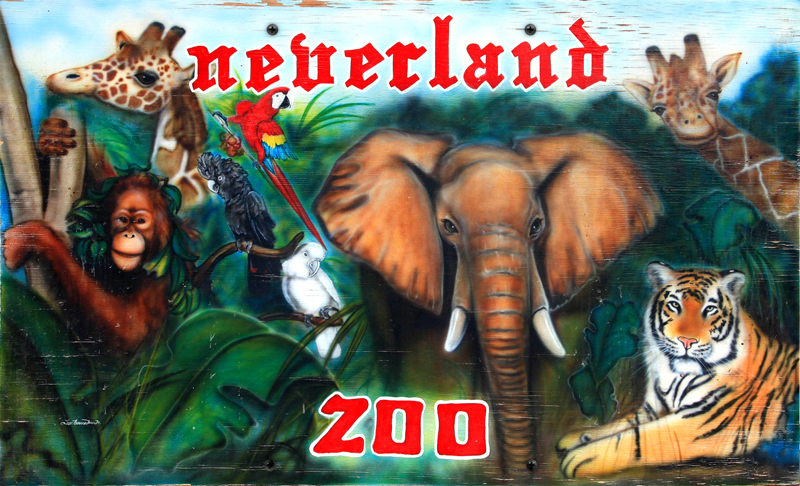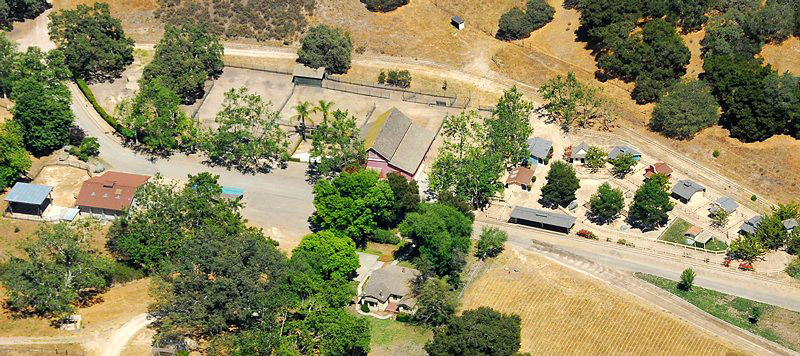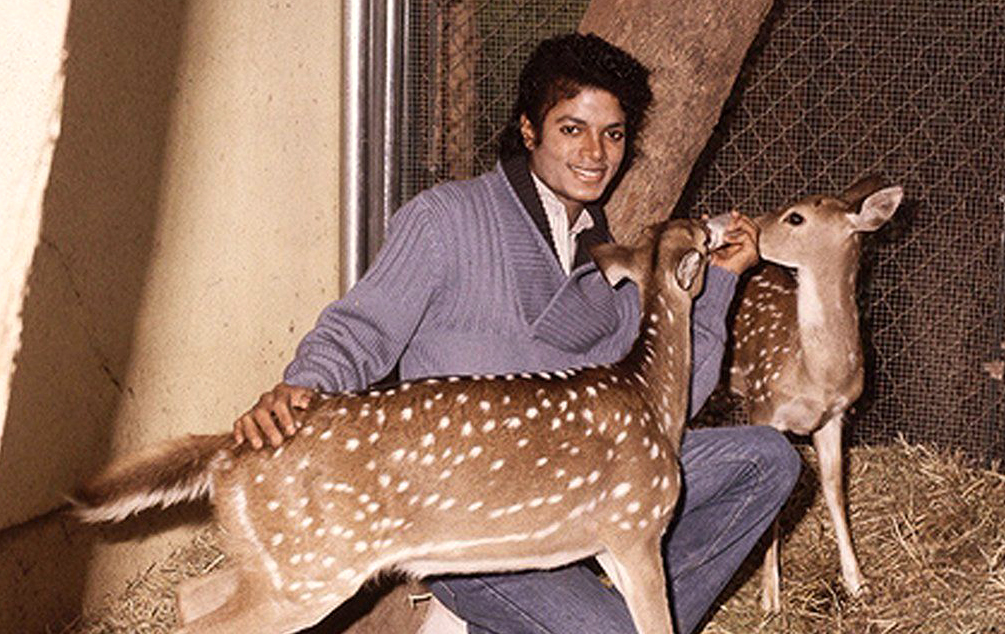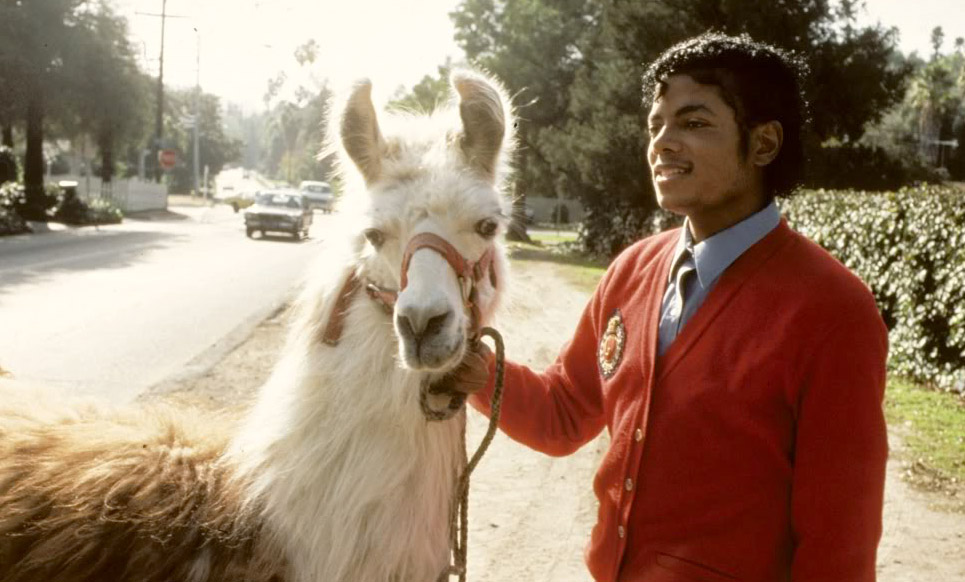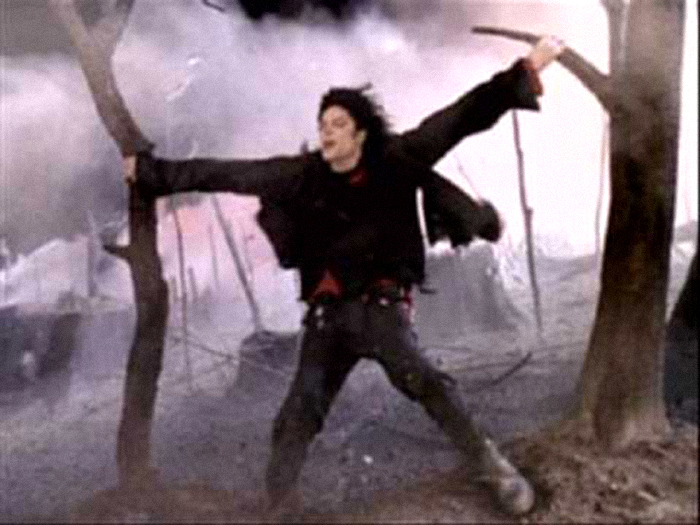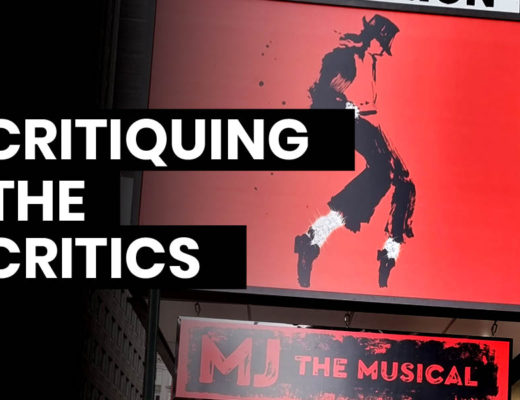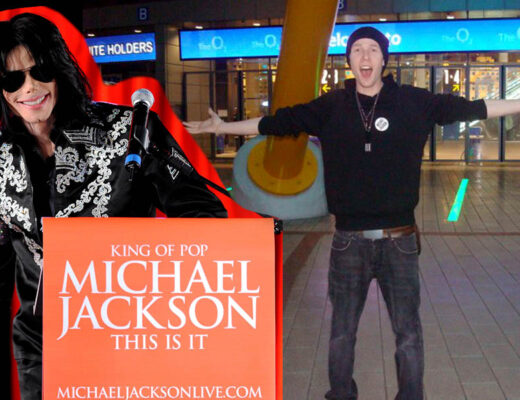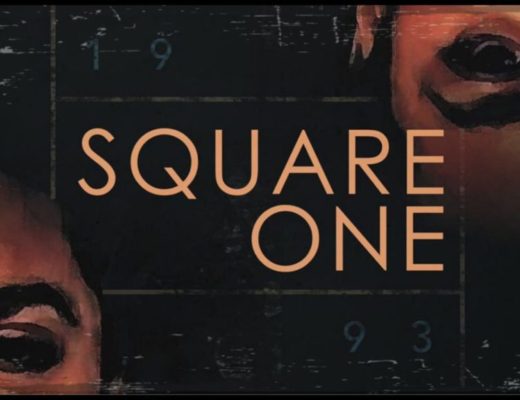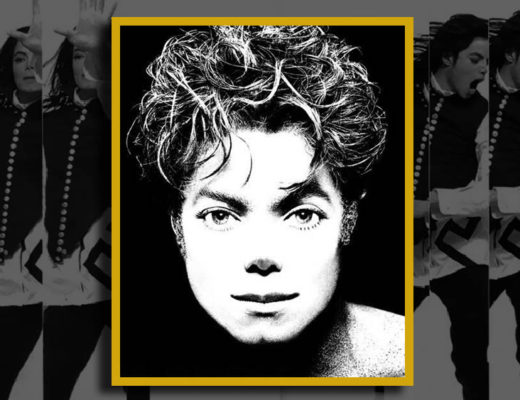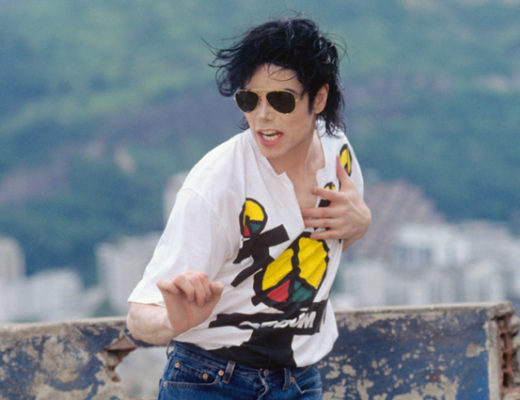Just when you thought negative Michael Jackson programming had been exhausted over the last few years, one production company went through the bins looking for used lemons in an attempt to wring juice from its rotten, discarded rind.
They didn’t find anything – so instead they thought a programme about the animals that resided at Neverland Ranch over two decades ago was the story the world needed – and that Ross Kemp was the man to front it.
For our international friends, Kemp became a household name as one of two potato-headed brothers in British soap ‘Eastenders’ who flexed a hard man, no-nonsense image. Kemp then went on to reinvent himself using his reputation from the soap, as a documentary presenter where he followed some of the world’s deadliest gangs, documented the army in Afghanistan and covered drug addiction and homelessness.
So surely a programme about animals that lived at Jackson’s Neverland Ranch was way out of Kemp’s usual orbit? But of course, all you have to do is throw the name Michael Jackson in the title and the project is backed and the cameras start rolling.
In a pre-interview ahead of the programme, Kemp is quoted as saying “For obvious reasons, Michael Jackson’s legacy has been ruined for many people, but he remains an idol for millions.”
Jackson’s legacy hasn’t been ruined for anybody. Those who have followed the recent accusations against Jackson since 2013 understand the full gravity of what is going on. Those who just watched and believed a TV programme in 2019, do not.
Over the course of 60 minutes, Kemp sought to satisfy the curiosity of absolutely nobody about what became of the animals that once resided at Neverland Ranch. Searching For Michael Jackson’s Zoo reeked of another attempt to just make Jackson out to be an awful person. It’s as though there’s a room of TV execs asking – “what haven’t we attempted to smear him on in the last 60 years? Oh, how about his love of animals?!”
And so Kemp took a trip across America trying to find answers to the questions nobody was asking.
60 Minutes Of ‘Searching’
The programme opens with the claim that Neverland started the trend of ownership of exotic animals among the public, which is neatly and without mention, followed up with a shot of Joe Exotic. The producers here are playing on the public’s memory of the chaos and horror of the Tiger King while trying to tie it to Jackson. From this point early on in the programme, the direction of the narrative was clear.
Of some 200 staff that worked on the grounds of Neverland over the 18 year period, Kemp manages to connect with just three. The first is animal trainer, Mark Biancaniello who had nothing but good things to say about Jackson and his time at Neverland ranch. Biancaniello speaks of his closeness with the Bear Baloo and shares a memory of riding around in the golf buggy with Baloo, who is enjoying an ice cream. There is no mention of Jackson.
Kemp’s voiceover then says “The bizarre tricks Michael Jackson wanted his bear to perform at Neverland…” – So Kemp takes Biancaniello’s story and twists it to be a ‘demand of Jackson’ himself, and this is of course accompanied by footage of Jackson riding his go-karts, lifted from disgraced journalist Martin Bashir’s programme, Living With Michael Jackson.
From here Kemp tries to take the few people that tuned in on a journey back to where Jackson’s love of animals began. He states that “Jackson’s first solo hit was about his pet rat, Ben.”
There was evidently just a basic refusal to use Google because as is now true to form, when talking about Michael Jackson, producers just decide they can say what they like.
For the benefit of Kemp, Ben was written by Don Black and Walter Schaf as the 1972 soundtrack to the movie of the same name, about a rat. The song was intended for Donny Osmond who was unavailable for the recording, so Jackson was offered the track instead. It became his first solo number one and won a Golden Globe for Best Song. It had absolutely nothing to do with Jackson’s ownership of a rodent. Google is your friend, Mr Kemp!
But there’s no time to get hung up on facts because we’re out on the road as Kemp sets out on his self-anointed ‘mission’ to find the residents of Neverland, and we’re met with an endless trawl of car park interviews with an assortment of characters who may have, at one time or another, come into contact with the animals years after they left Neverland.
A huge focus is placed on the giraffes and the majority of the programme follows a slow trek to locate the two remaining giraffes who Kemp believed were still alive. Kemp learns of the fate of two members of the tower (a group of Giraffes) – something the rest of us learned when it was widely reported in 2010. However, instead of spending the programme focusing and pursuing on the investigation, poor conditions and the former owners of The Hancock Preserve, we’re back to focusing on Jackson.
He takes the words Biancianiello offered that “When Jackson bought an animal, they were his for life” as a way to blame Jackson for everything that happened after and at every turn, there are futile attempts to tenuously link whatever is being said back to Jackson or Neverland. When Kemp visits a failed nature preserve, he exclaims “and like Neverland, the Hancock Preserve is no more.”
And like Searching For Michael Jackson’s Zoo, research is no more.
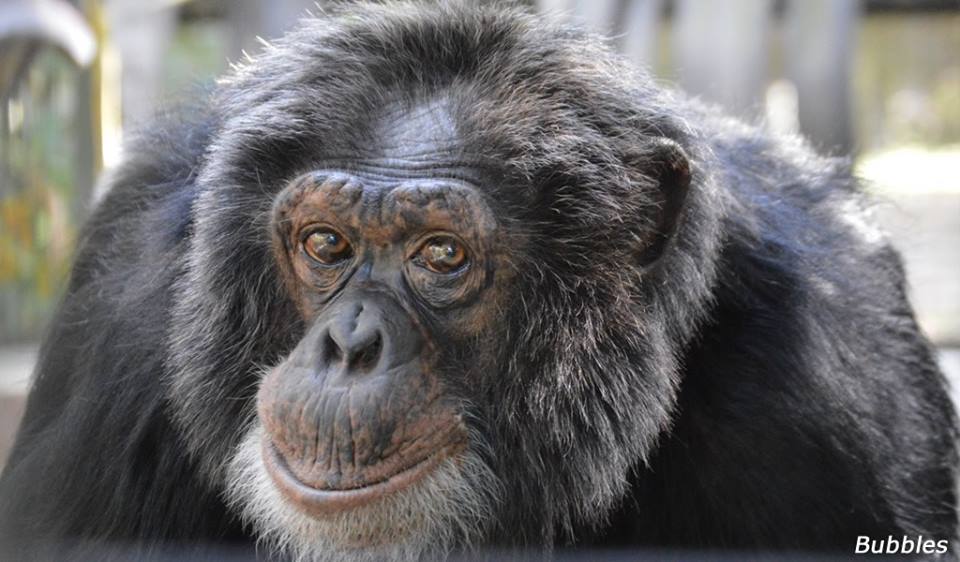
Good ‘Ol Bubbles
The programme includes a rehash of tired old, disproven claims – the outright pointless to the frankly bizarre. Naturally, Bubbles, who is perhaps the most recognised Neverland animal resident, was once again the centre of claims of mistreatment and abuse.
Kemp speaks with well-known Primeapologist Jane Goodall, who in 2014 hit the headlines again for claiming that Bubbles was abused under Jackson’s care and that she confronted him about it on a trip to Neverland.
“Conditions were terrible,” Goodall tells Kemp “The whole situation was horrendous”.
This is quite the contrast to what she said in a 1991 interview with the Daily Mail, in which she expressed “Of course, in an ideal world no chimps should live in captivity but I think Michael’s are very well off and should stay with him.”
With her statement in the programme that she “was trying to get money from him”, Goodall then shares that she showed Jackson videos of chimps in tiny cages at research facilities and that his reaction was simply “smiling”. “How could you smile seeing this?” she claims to have asked.
Interestingly, this is not what Goodall claimed Jackson smiled about in a 2009 interview with CNN:
“He loved chimpanzees,” she said. “He loved to watch them feeding. He liked their faces. They made him smile.”
In her pursuit to receive money from Jackson, Goodall spoke with him about how her work might benefit from funds raised from a song on Jackson’s next album, Dangerous.
She also claimed in this same CNN interview that Jackson asked her for footage of these conditions because, to quote Goodall “he wanted to be angry and cry as he wrote the song, which became “Heal the World,” she said.
Quite the opposite from her new statements in Kemp’s programme.
The idea that Jackson would find elation at seeing suffering on any level is preposterous! In fact, scenes of suffering were known to deeply affect Jackson. On seeing the first cut of the short film for Man In The Mirror, label exec Larry Stessel shared that Jackson became so emotional by the content that he was distressed after the playback, “This has been put together well, but I never want to watch it again.” he told the room.
Likewise, with regards to the suffering of animals, many from David Nordahl to Earth Song director Nick Brandt have attested to just how much Jackson was affected by their suffering and wanted badly to do his part to help. In 1996 The Ark-Trust Foundation awarded Jackson the 1995 Doris Day Award for his work in highlighting the plight of animals through his short film, Earth Song.
With the claims regarding Bubbles’ welfare and emotional state – back in 2019, when these claims originally surfaced, the Centre For Great Apes, where Bubbles now resides, released a statement to dispel the claims. The statement is still available online and could have easily been accessed by Kemp & his team. In the statement, they make clear that:
“Bubbles arrived at the sanctuary in excellent health and with normal affiliative behaviours with other chimpanzees.”
On the claims that Bubbles tried to commit suicide, the Centre stated: “There is absolutely no truth in this statement and it’s just ridiculous. This is a concocted headline we assume was meant to sell papers.”
It’s no surprise that in the week following the programme, the Daily Mirror (infamously sued by Jackson in 1992) ran the rehashed story in an attempt to once again use Jackson’s name for clicks. Too often Jackson fans are accused of suggesting there’s a campaign against him and are deemed hysterical megalomaniacs, but the Bubbles story proves them right – The claim was made, the sanctuary confirmed it false – the same claim is made again with no accountability for the disregard of fact!
In truth, Bubbles was rescued from a research facility in Texas by Jackson and cared for both at the Encino property and then at Neverland Ranch. Today, Jackson’s Estate & the Jackson family still provides support for Bubbles as was agreed by Jackson himself.
Kemp concludes his section on Bubbles by claiming that Jackson shipped Bubbles out to a sanctuary and replaced him with another chimpanzee called, Bubbles. Not since Michael and Janet were assumed to be the same person has a story about identity been so ridiculous.
There were three chimpanzees at Neverland, AJ, Max & Bubbles. After Bubbles left, just AJ & Max remained. No ‘new’ Bubbles was brought in.
The programme concludes with a fly overshot of the Neverland Train Station; the edges of the screen have been darkened and the colour overexposed to make the scene appear haunting, the music is sinister as Kemp proclaims, “Training animals to do tricks for his amusement didn’t make Michael Jackson an animal lover.” – a conclusion supported by his interview with Carol Davis, former director of Companion Animal Protection Society, who claimed that a person can hold two views of Jackson
“One can be a real fan of Michael Jackson’s fantastic music, and also hold in one’s head that Michael Jackson hated animals.”
Michael Jackson did not hate animals. This statement is dramatic and hysterical at best.
What’s interesting with this statement is that Davis holds nobody else responsible who worked at Neverland. She says that Jackson hated animals. Because it’s easier to say these things about a man who has been dead for 13 years.
The very suggestion contradicts Goodall’s quote that Jackson wanted to be “angry and cry” when writing about animals’ suffering. It’s also the opposite of countless testimonies of Jackson’s love, compassion and “gentle nature” towards animals from people who actually knew him. Davis did not.
Is It Over Yet?
There ended this utterly pointless saga that lasted 60 minutes in which the only thing I learned was Kemp’s decision to switch to presenting instead of acting was probably based on the fact that his over-exaggerated responses and ridiculous facial expressions seem to fail in portraying a genuine reaction.
Actually, that’s unfair. I also learned that Kate Moss looks fantastic in her latest ad for Charlotte Tilbury make-up – because the many ad breaks held my attention longer than the programme itself.
It seems the majority of Kemp’s fans shared the same sentiments, deeming it “desperate”, “embarrassing” and encouraging them to “switch off”. Of course, there were a few pearl-clutchers, but it is 2022 after all and a bit of public virtue-signalling makes for a full meal.
I waited through the end credits to see if any footnote would appear signalling that Kemp and his production partners had made donations to any animal welfare charities, or if there would be a link the viewer could visit to make a donation – but no. nothing. So it begs the question of whether the animals and their stories had just been used to profit from this programme? And if donations were made, they were not disclosed. Nor did it seem to present any efforts to encourage the conservation and protection of animals in the future.
Everybody Wanna Believe All About It
In the last four years, British television’s thirst for a Jackson story has gone into overdrive and out of the four main terrestrial networks, three (BBC, ITV, Channel 4) have produced Jackson programming that is so not factually based that one may as well consider Downtown Abbey to be a Big Brother-style live stream, direct from 1927. Yet each one is marketed as a documentary.
The dictionary definition of ‘documentary’ includes the concept of it being a ‘factual report’, so it’s unfortunate that the term “documentary” no longer matters. Bafta essentially redefined the term when they awarded Leaving Neverland ‘Best Factual Series’ in 2020, despite over 60 provable false, unfactual claims.
I recall a time in 2019 when the mainstream media op-eds were insistent that Jackson should be cancelled. That no one should play his music, that no one should talk about him anymore. Yet these same crowds cannot stop talking about or profiting from Michael Jackson. They want to make more programmes, they want more articles on news sites, edged with paid advertising. They want to make money off of Michael Jackson’s name while insisting you never utter his name again.
You’d have thought ITV would be keen to avoid Jackson as a programme topic based on the renewed interest in disgraced journalist Martin Bashir’s treatment of Jackson for 2003’s Living With Michael Jackson which aired on the channel. But Searching For Michael Jackson’s Zoo took it one step further and used footage from the show to prop up its own archival content.
Dealing With The Facts
Neverland continues to be misunderstood. The picture painted by the media is that Jackson created Neverland, brick by brick, ran the grounds and controlled every single aspect of the property including staffing – while being out on tour, shooting short films or releasing a globally successful album.
As ex-Neverland employee, Ray Robledo points out, “If you had a clue to how everything worked, you would know that at his home there were people responsible for every department.” before adding “He entrusted people he employed to do the best job they were hired to do. If there was a problem with the zoo or the park…then the blame goes to the individuals assigned to maintain it.”
It’s almost as if it’s somehow confusing to journalists that it wouldn’t be possible for one individual to run a full ranch with a theme park and zoo single-handedly and that he might have employees and managers to take care of his vast estate.
Robledo’s words are particularly important with regards to the claims regarding the use of bullhooks on the elephants at Neverland. As Kemp interviews the trainer from the ranch after footage of their usage at the ranch, he asks if there’s any regret. The trainer replies that there is.
The bullhook is an object that has no place in the care of elephants and in January 2018, the use of the bullhook was outlawed in California, which became only the second state to do so. The following year, the Association of Zoos & Aquariums announced it was planning to phase out the use of the bullhook in all of its 236 AZA-accredited zoos.
To put into perspective, 236 zoos in 2019 were using Bullhooks. Thankfully, it’s a practice that is finally coming to an end – and it comes 14 years after the animals left Neverland.
Is the use of bullhooks on elephants right? No. Was it commonplace across accredited zoos in the US during the 90s and 00s, Yes. If animal experts, carers and trainers were using them across the US, would Jackson have reason to question those in the field? Did blind faith in ability to do the job correctly mean Jackson didn’t question the ethics of the nationwide use of the bullhook? We’ll never know as Jackson is no longer here to share his views. But naturally, the programme will blame Jackson for its use.
Though Jackson was clear on what he wanted to achieve, it took a whole team to create Neverland. The group of men and women who listened to Jackson’s ideas and then brought the property to life understood the concept and they lived and breathed the creation and running of Neverland. They became familiar with every essence of the grounds and how they could be used. They used their own creativity to create this unique and special place and all of them understood their collective mission. This was Jackson’s property, but his co-creators had an emotional stake in the building and development across the vast land.
The idea that Jackson would rescue hoards of exotic and abused animals to keep them in a cage on his 2,700-acre ranch is absurd. In 2009, Dangerous, HIStory and This Is It tour director Kenny Ortega recalled sitting with Jackson at his home and looking up to see an elephant’s casual breeze past the window.
A sight not uncommon at the ranch, as personal Neverland painter and friend David Nordahl told me in 2016:
“They brought the elephants into the park in the mornings to take branches off the trees. It’s just so amazing to stand near something so big yet so gentle and look into their eyes as it explores.”
But didn’t Kemp’s programme suggest the animals were kept cooped up in terrible conditions? When I asked specifically whether the animals were free to roam the grounds in that same interview, Nordahl confirmed,
“Yes! They even let the snakes free! Every morning the animals came around and then the ground keepers cleaned the mess.”
As far back as 1983 when living at Hayvenhurst, Jackson commented that his animals were free to “roam the grounds” and that when he’d take his Llamas on long walks through Encino it would “stop traffic.”
When not roaming the grounds or being walked, the paddocks were equally spacious according to Nordahl who remembered tigers Thriller & Sabu,
“They had this huge indoor and outdoor facility with huge dead trees and in the morning we drove the tigers out to the pool. They were so excited; jumping in it and playing around. It was so special to watch!”
As Kemp stood outside the ranch attempting to find inconsistencies between Mark Biancaniello and Rob Swinson’s stories about Jackson leaving Neverland, he didn’t consider that both finished working at the ranch, not only in different years but in different decades! Yet he continued to push on the idea that Jackson had abandoned and neglected his animals – and this simply isn’t true.
After the 2005 trial in which Jackson was acquitted, animal rights activists PETA took aim at him for the condition and welfare of the animals based on malicious tabloid reports which prompted an investigation by The US Department For Agriculture in December 2005. The department conducted a full investigation and concluded the “animals were being adequately cared for” with a spokesperson for the USDA confirming to media on Wednesday 18th January 2006 that they were unaware of any violations of animal welfare.
Santa Barbara County Animal Services also looked into the claims with representative Pete Miller being satisfied with the conditions of the ranch.
Furthermore, it appeared that following this announcement, PETA spokesperson Lisa Wathne confirmed they hadn’t sought to verify the merit of the tabloid claims before making a complaint to the USDA or possessing any “inside scoop”.
In a bizarre twist, the National Enquirer who published the story which prompted PETA’s complaint insisted after being contacted by lawyers, that the claims came to them – from PETA! Yet PETA claims the allegations came from the tabloids.
And before anybody decides to resort to the classic and ludicrous ‘payoff’ claims, this came at a time when Jackson’s cash flow options had run dry with payments due on his $270m loans that same month. In addition, Neverland Veterinarian Martin Dinnes who had worked with Jackson for over 20 years and was responsible for animal welfare was owed $91,602.05 as of 27th December 2005 and stated
“Through all of this…even if I wasn’t paid, I was going to take care of those animals.”
Dinnes also disputed the photos taken by helicopter and stated that the conclusions drawn from the images were not the reality
“They took a picture of the giraffes in the yard and claimed that there was a dark spot on the ground that they said was blood. Under my watch that can never happen,” said Dinnes, who was also an American College of Zoological Medicine diplomate. In 2014 Dinnes was awarded the American Association of Zoo Veterinarian’s Lifetime Achievement award for his services to animals and was highly respected in his field.
Despite this PETA tried to resurrect the already false claims in 2009 when another tabloid ran a story claiming Jackson was to include a ‘Jungle section’ in his This Is It concert and have a live elephant and Panthers on stage, in a statement at the time, PETA stated:
“Michael Jackson gave away his chimpanzee, and left giraffes, elephants and other animals in appalling, cramped conditions when he vacated the Neverland Ranch.”
A response that’s become synonymous with commenting on Michael Jackson – Keep pushing the claims, even when they’re proven false.
For a start, Jackson didn’t ‘give away’ his chimpanzee, he ensured that Bubbles had a better environment to thrive in with expert care and other chimp companions. He also ensured financial support. Using the term ‘gave away’ appears to have been done purposely to incite the idea of abandonment and neglect.
Secondly, in 2008, Jackson had discussed with three collaborators plans for his then-untitled comeback show ideas to incorporate a Jungle themed section, which focused heavily on swinging vines, artificial coloured birds, animatronic animals and dancers embracing animal-style movements – But of course, that story just isn’t scandalous.
When It Doesn’t Fit The Narrative
The production company, also connected with longtime ranch employee Allan ‘Big Al’ Scanlan, though none of his time speaking with Kemp made the final cut. On reflecting, Scanlan tells me
“The ONLY thing I enjoyed was … NONE of my interviews was in it. My guess is there are 2 reasons for that … 1) EVERYTHING I had to say (including some funny zoo related stories) was TRUE & POSITIVE … 2) A conversation I had with Ross & Harry prior to the interview”.
Of the premise of the programme, Scanlan also noted
“Ross wants us to believe that Mr Jackson started a world crisis of people wanting to put a zoo in their backyard, I am shocked, that is so ridiculous and I can’t believe he left that in (the programme).”
And Scanlan is right, the idea that Jackson started a ‘world crisis’ is ridiculous.
Personally owned menageries of the western world date back as far as the thirteenth century, with one of the most famous being that at the Tower of London which was on site until the 1830s. Throughout the 1600s and 1700s, a rise in personal menageries is well documented, along with the number of personally owned animals who perished due to poor conditions or distress.
In the U.S, private animal ownership saw a sharp rise from 1850, something Slate magazine referred to as “the 19th-century genesis of private zoos and menageries”. One of the most notable personal animal collections was that of newspaper publisher William Randolph Hearst, who allowed several wild animals to roam his vast private estate while keeping lions, bears, monkeys, tigers and leopards in cages on his California grounds as many lavish parties were hosted in the early 1930s. Considered the largest private zoo in the world, it began disbursement in 1937 after Hearst ran into financial difficulties. Today the media empire Hearst created owns publications including The Hollywood Reporter, The Oprah Magazine and the San Francisco Chronicle.
Furthermore, it’s a touch embarrassing that Kemp would suggest Jackson’s 2,700 acre Ranch would be comparable to a ‘backyard zoo’, when the smallest and fully accredited Zoo in California is just 5 acres. If 5 acres is deemed large enough, why would 2,700 not be?!
Don’t You Need Permission For That?
The use of official footage also raises questions as the programme features a section from the Earth Song short film and footage from Michael Jackson’s Private Home Movies, which is credited to MJJProductions. The footage shows the moment Liz Taylor arrives at Neverland with Gypsy the elephant. Kemp refers to the footage as ‘heavily edited’, yet compared to the original clip released in 2003, this new version has been heavily edited, cutting out the majority but ensuring to splice in the part in which Michael greets Liz and Gypsy.
Who gave permission for MJJ Productions footage to be used? Who gave permission for Earth Song? The credits at the end do not acknowledge the Jackson Estate or Sony Music.
Kemp also incorrectly suggests that Jackson presents himself in the Earth Song short film as ‘resurrecting the elephant.’ It’s clear from simply watching the short film that Jackson appears as an ordinary individual along with others around the world. When the Earth takes control and starts to ‘roll back’, reversing the damage committed by mankind, Jackson is no more immune to the wind than any of the other people and grabs the trees to prevent himself from being swept away. He didn’t resurrect anything, he didn’t instruct the rollback.
If you’re going to include Jackson’s own asset, at least have the respect to understand it.
In 2018, the Estate sued ABC’s parent company, Disney, for using Jackson’s official works in their programme The Last Days of Michael Jackson, in which the Estate noted that Disney was fiercely protective of its assets, so the Estate had the right to be too.
In addition, a scene in the programme sees Kemp in a small plane, flying over Neverland to see the ranch from above. According to lawyers for Ron Burkle, the new owner of the ranch, the ranch is a “private family residence” and any attempts to photograph or film the ranch are considered an “invasion of privacy.”
The same was true under Jackson and Colony’s ownerships. In 2018, when I visited the entrance to Neverland Ranch, a car pulled up and the guy inside began to load up a drone. I went and spoke with the gatekeeper who came out and informed the guy it was private property and flying a drone over the ranch would be a breach of the law.
Again in the credits, the programme does not thank Burkle or his family. So did the production crew acquire permission to film the ranch? And is this what they considered ‘behind the scenes footage’? The press release promised “exclusive behind the scenes footage of Neverland”, yet delivered old stock shots, official Jackson footage and clips from Living with Michael Jackson.
Pulling Back The Curtain
Here’s the thing that’s so perplexing about people’s view of Jackson – and this is with regards to both the allegations and Goodall’s claims that Jackson would hit Bubbles – If Jackson had something to hide; something wrong, something sinister – Why would he openly and actively invite people to discuss it with him. If Jackson was really treating and keeping animals badly, he wouldn’t have been foolish enough to invite Goodall for a guided tour. Furthermore, if Goodall’s claims now are true, why didn’t she make the claims before, after Jackson mentioned the possibility of donating funds to her cause?
And it was the same for others too. “You must visit the Reptile House,” Jackson told a film crew who had arrived on the property in 1992 to film. Having agreed only a few days prior that Sony would be able to capture a visit from Make A Wish Foundation, in which he had opened the ranch to a group of terminally ill children and their parents, providing them full use of the grounds and facilities.
The crew and Sony reps did take a trip up to explore the reptile house and remarked on just how ‘expansive and modern’ it was, before quickly leaving due to feeling uncomfortable around scores of reptiles.
On the advice of experts, not all animals were exposed to the public, and I asked Nordahl – was there a part of Neverland that’s not been seen publicly?
“Yes! The most important was a building housing abused or neglected animals. It was off-limits because they didn’t want anybody disturbing the animals as they were being rehabilitated.”
The Future They Ignored
Today, there are animals across the US who are suffering; living in poor conditions, treated badly and used for entertainment. Yet instead of shining a much-needed spotlight on this current and ongoing issue in a primetime TV slot, Kemp and his production partners chose to focus on a Zoo that ceased to exist 16 years ago and a man who died 13 years ago.
In 2021, Born Free USA reported that “All the major U.S. circuses that use wild animals as entertainment have been cited for not meeting the minimum requirements for the standard of care put forth by the U.S. Animal Welfare Act.” – Kemp and co could have travelled the US looking for these circuses that are still using animals for entertainment. They could have tracked down circus owners and challenged them on what they’re doing, today! But no, because highlighting real-world issues doesn’t sell half as much as putting the name Michael Jackson on a programme.
Let’s be frank. After watching it, it’s my view that this programme wasn’t about searching for animals. It wasn’t about what happened to giraffes and elephants whose names the public doesn’t even know, let alone think about in the last 16 years.
It was about saying – “Michael Jackson was a bad guy” – A false rhetoric that’s so incredibly boring now that it makes watching paint dry seem more preferable!
At this point, the majority of the public is overly familiar with the mainstream media’s concentrated targeting of Jackson. It’s been going on for close to 40 years, in which Jackson has had so many ridiculous assertions made against him, that the media are now in a habit of contradicting themselves.
Thankfully for commonsense, Searching For Michael Jackson’s Neverland Zoo was not a ratings hit. It didn’t rank in ITV’s top 5 programmes for the week, nor the Top 20 UK TV programmes across all terrestrial channels for the week and was beaten on its Wednesday night airing by ‘The Great British Sewing Bee’ – A show that sees amateur sewers compete against each other to impress judges. It seems the public would rather watch actual stitching take place than stitched together stories and claims about Michael Jackson.
If rumours are correct, then there are hopes from the production team that this can air in the US – and with any luck, they’ll be greeted with the same dismissive and perplexed reception UK audiences overwhelmingly gave it.
Programmes such as this should stand as a warning to producers – every time you try to make unfounded claims about Michael Jackson – We’ll be there to set the record straight.
© Pez Jax 2022
This article is not to be replicated or translated in whole or in part without permission.
Following the completion of this article, I’ve made donations to the following organisations. If you would like to help animal conservation, you can also visit and donate here:
The Shambala Preserve – The preserve that cared for Thriller & Sabu
Center For Great Apes – The current home of Bubbles
Giraffe Conservation Foundation
Jacksonville Zoo – The home of Ali the Elephant

